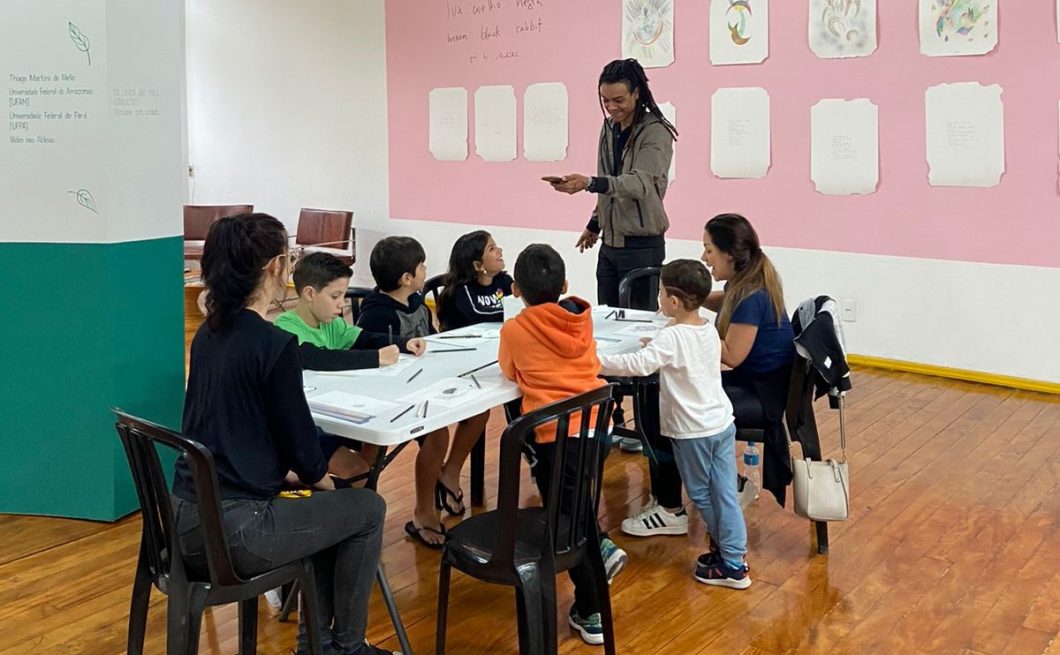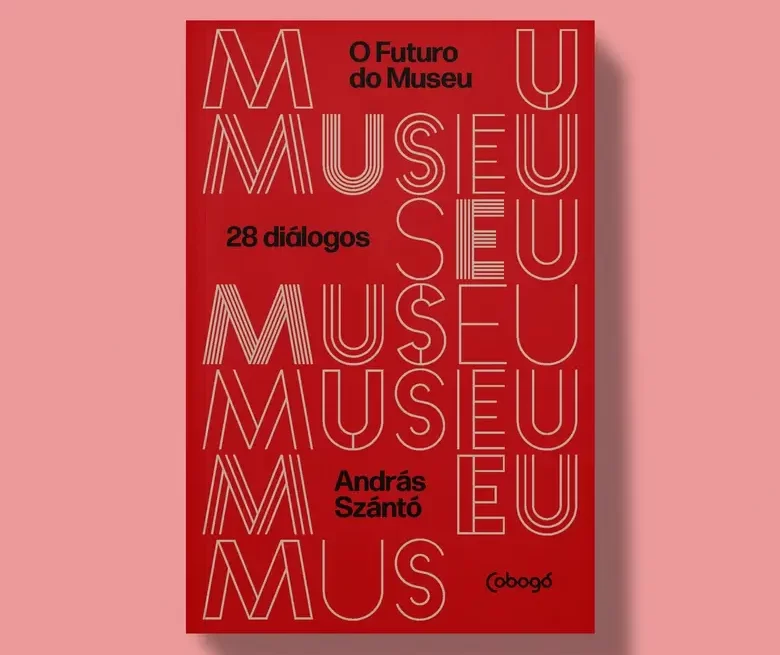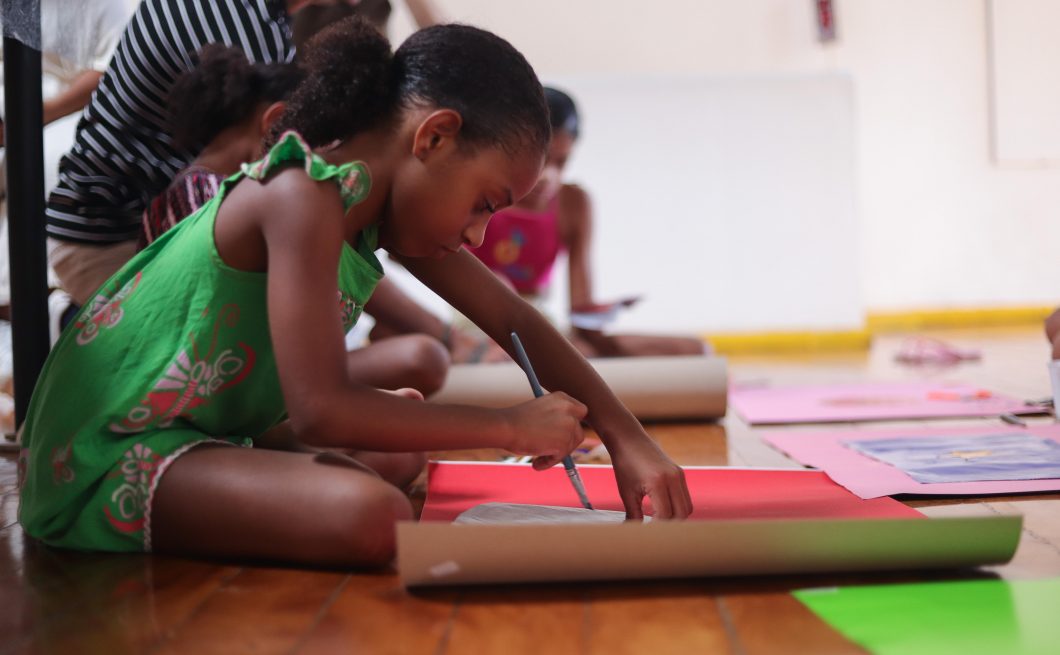Held in collaboration with Inclusartiz, an exhibition with eight Brazilian artists is open to the public in London
Curated by Lucas Albuquerque, “Whispers from the South” presents at LAMB Gallery a cross-section of contemporary Brazilian artistic production
On October 5th, the LAMB Gallery, in London, opened the exhibition “Whispers from the South” to the public. Held through an institutional collaboration with Instituto Inclusartiz, the group exhibition aims to explore how contemporary Brazilian artists confront the notion of subalternity and rethink visual culture through a critical examination of their own history.
Curated by Lucas Albuquerque, curator of the Inclusartiz artistic residency program, the exhibition presents a cross-section of current Brazilian artistic production, bringing together eight names from different regions of Brazil: Ayla Tavares, Hal Wildson, Heloisa Hariadne, Joelington Rivers, Luisa Brandelli, Noara Quintana, Pedro Neves and Talles Lopes. All selected artists share a common dialogue that challenges the cultural complexity that shapes the country.
“Driven by the common desire to investigate cultural identity, these artists question the historical setbacks embedded in Brazilian history through painting, drawing, photography, embroidery and sculpture. His poetic gestures poignantly illustrate how the reverberations of the past influence the present and illuminate new challenges in South America”, explains the curator.
By presenting these eight artists, all supported at some point in their careers by Instituto Inclusartiz, “Whispers from the South” discusses Brazil’s colonial past and reimagines the present, highlighting local cultures and their ties to the global South. Each of the works echoes political and aesthetic discussions in a country located 9,000 km away from the place where the works are being presented, suggesting an ongoing revolution in the field of visual arts – acting as seismographs of their time and announcing the turbulence that approaches.
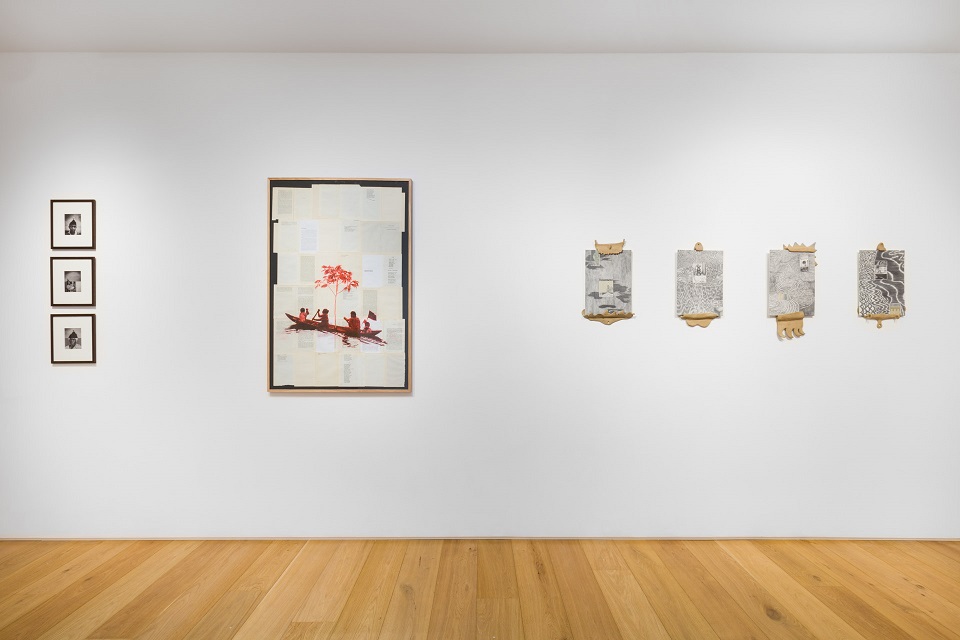
The art works
Texts by Lucas Albuquerque
The practice of Ayla Tavares (Rio de Janeiro) explores the intricate relationship between craftsmanship and the layers of time it evokes. Through the use of clay and charcoal, Tavares investigates archaeological artifacts, architecture and objects that we handle on a daily basis to think about memory and common life. In her drawing practice, she covers the entire canvas with patterns reminiscent of land and sea, emphasizing its connection with ceramics, a material that has been repeatedly discovered on archaeological expeditions throughout history. Thus, the artist deepens the notion of ceramics as an “eternal object”.
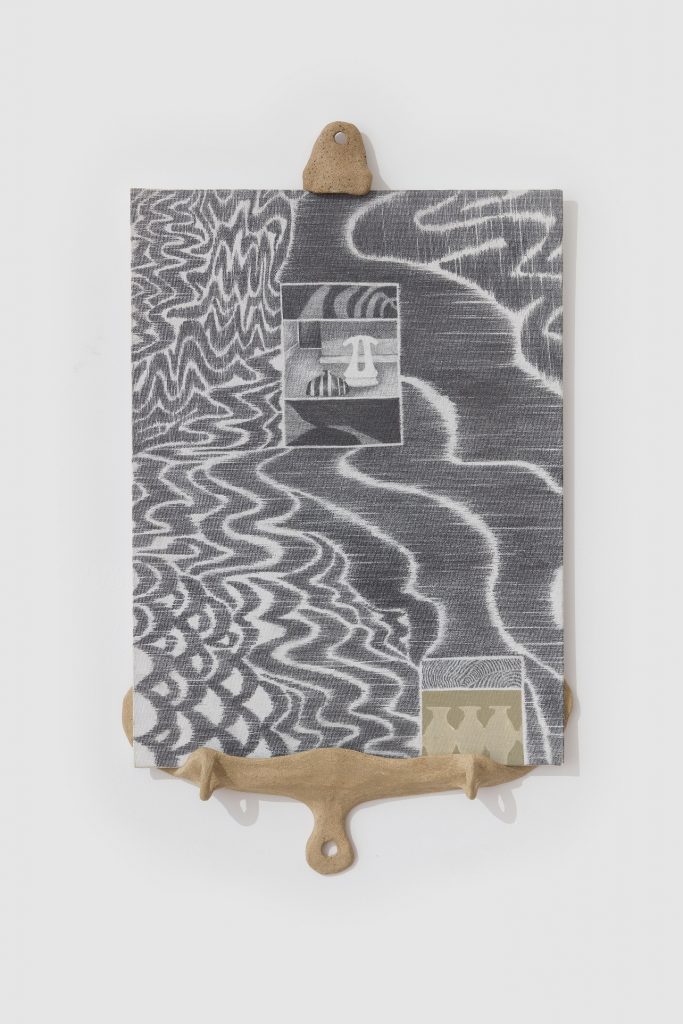
Interested in the traces of colonization evoked by decorative arts, Noara Quintana (Santa Catarina) deals with the remains of the influence of “Frenchism” experienced in Brazil at the beginning of the 19th century. She reimagines its gaps through a tropical Belle Époque, seeking to integrate colonial heritage with an affirmative and diverse portrait of Amazonian botany. In her “Serpentine Traces” series, the artist blends the railings and fences popular during the Arts and Crafts movement with tropical imagery, while seeking narratives that unite Britain and the Amazon during this period.
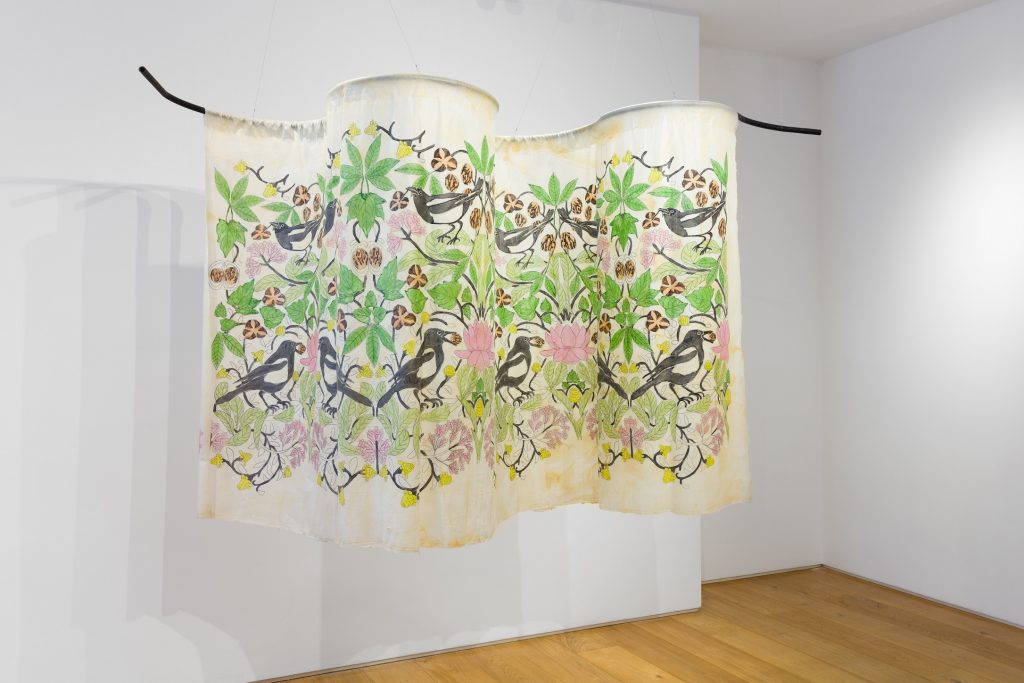
Luisa Brandelli (Porto Alegre) also appreciates the influence of decorativeness in her work. However, her practice develops with a more abstract aesthetic. The artist typically uses common materials such as fabric, threads, sequins and beads to create substantial objects in pictorial form. By employing sewing techniques often associated with the “feminine,” Brandelli challenges traditional gender roles in artistic production. She explores the dichotomy between “high” art and craftsmanship, and the distinction between valuable and common materials.
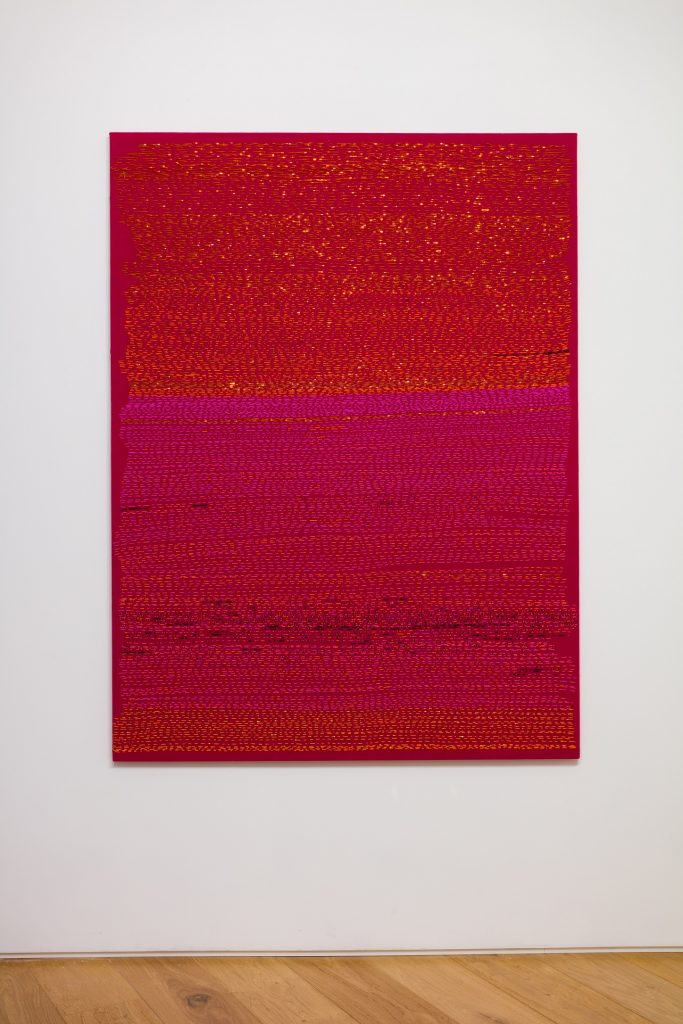
The work of Talles Lopes (Goiás) focuses on the dynamics of subservience and exploitation from a geopolitical perspective. It employs infographics commonly used in geographic surveys as tools to expose the country’s history of exploration. In the work entitled “Universal Language for Local Erasures”, the artist superimposes four different maps originally produced by the Brazilian Geographic and Statistics Institute – IBGE during the term of the 21st president, Juscelino Kubitschek (1956-1961). This map provides a window into the current disparities resulting from political and economic developmental projects that continue to leave their mark on the country to this day.
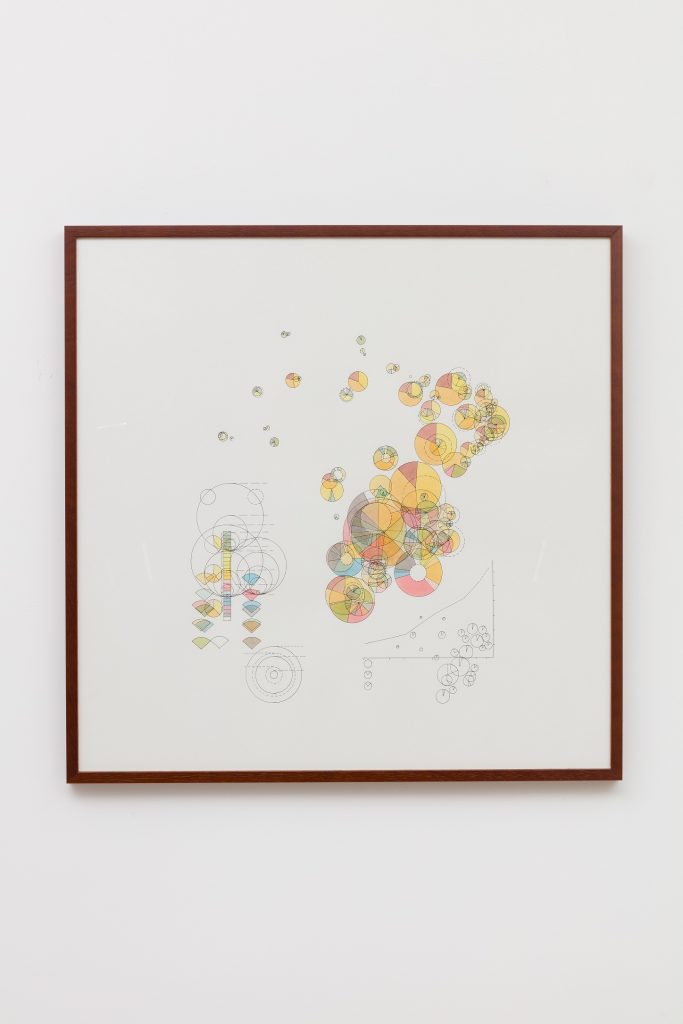
Hal Wildson (Goiás), also born in the Central-West region of Brazil, defends a rebel movement that demands national symbols, which the far right has appropriated in recent years. This movement aims to envision a “Re-Utopya” project, emphasizing the integration of ancestral knowledge and care practices. In his latest series, the artist uses renowned books, published between the 1950s and 1980s, which discuss utopia, Brazilian identity and the country’s development. With this, Wildson reconstructs new interpretations of the past, viewing it as fertile ground for shaping a better future.
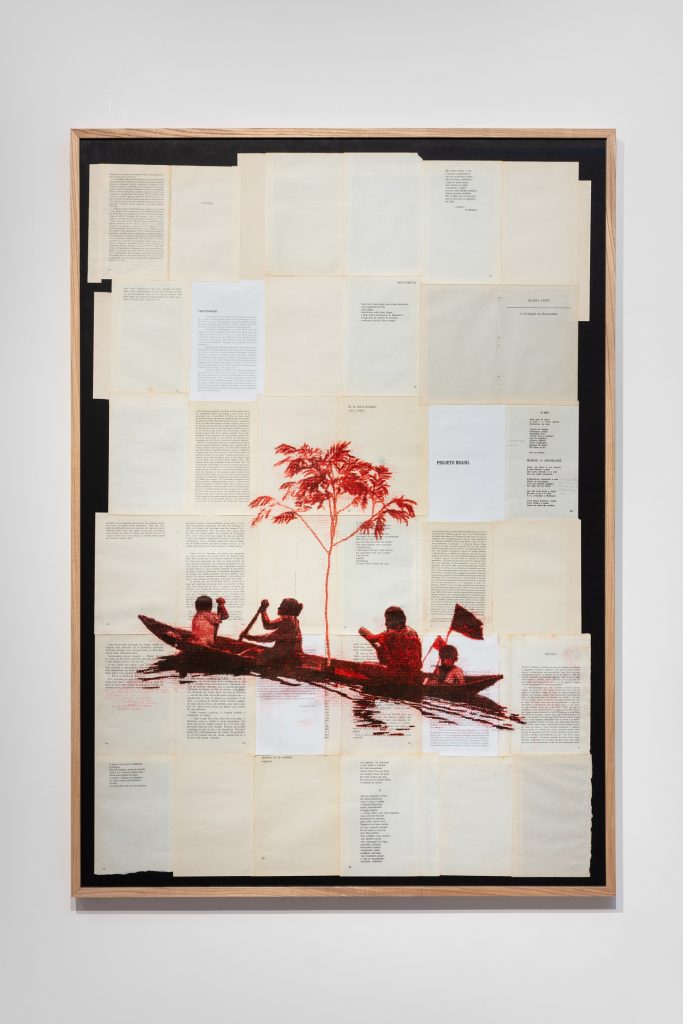
In the Northeast of Brazil, Pedro Neves (Maranhão) carries out a pictorial exploration in which abstraction and figuration mix in a symbolic realm. In this sphere, the body, everyday objects, botanical life and clothes immerse the viewer in the richness of Afro-Brazilian cultural practices. The painting presented in the exhibition is part of an ongoing series in which the artist paints his mother’s dreams. The untitled work refers to a dream in which two women talk about their son (the artist). In the work, Neves tenderly represents himself, like a potted plant, following the dreamlike image described by his mother.
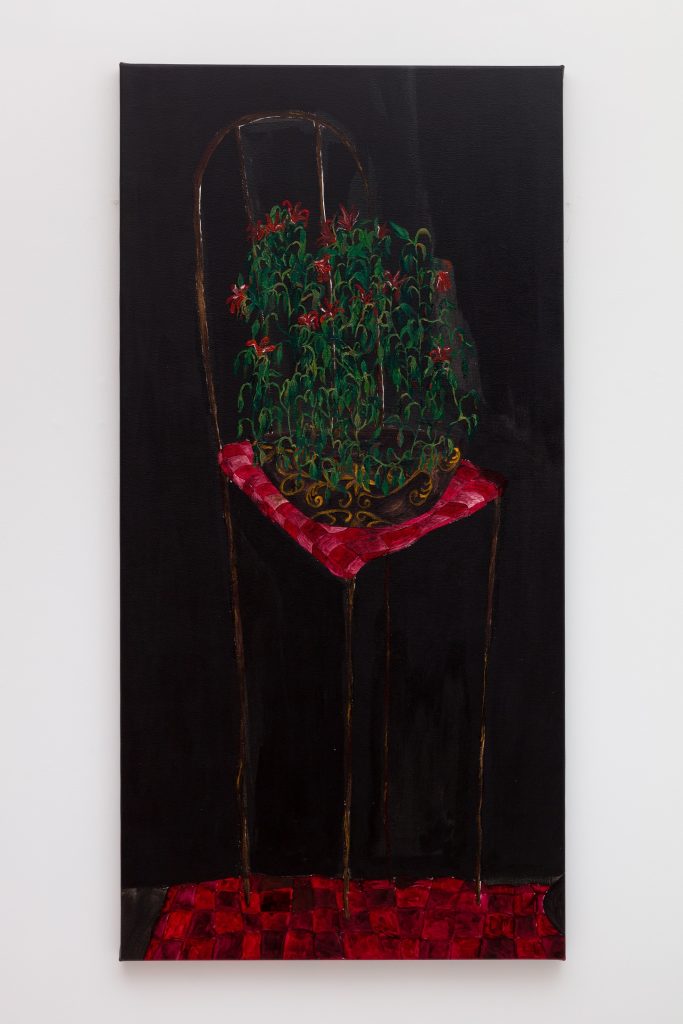
Similarly, with a focus on ancestry, Heloisa Hariadne‘s (São Paulo) practice is characterized by vibrant colors that invite the viewer on an introspective journey surrounded by elements of nature such as botanical life and wild animals. His works seek to intertwine painting and poetry, creating a composition that reflects the desires of a new generation in Brazil. By fusing different natural objects into fluid forms, Hariadne creates a gentle and intimate portrait in which her continuous inner investigation becomes the terrain on which she moves between the abstract and the figurative.
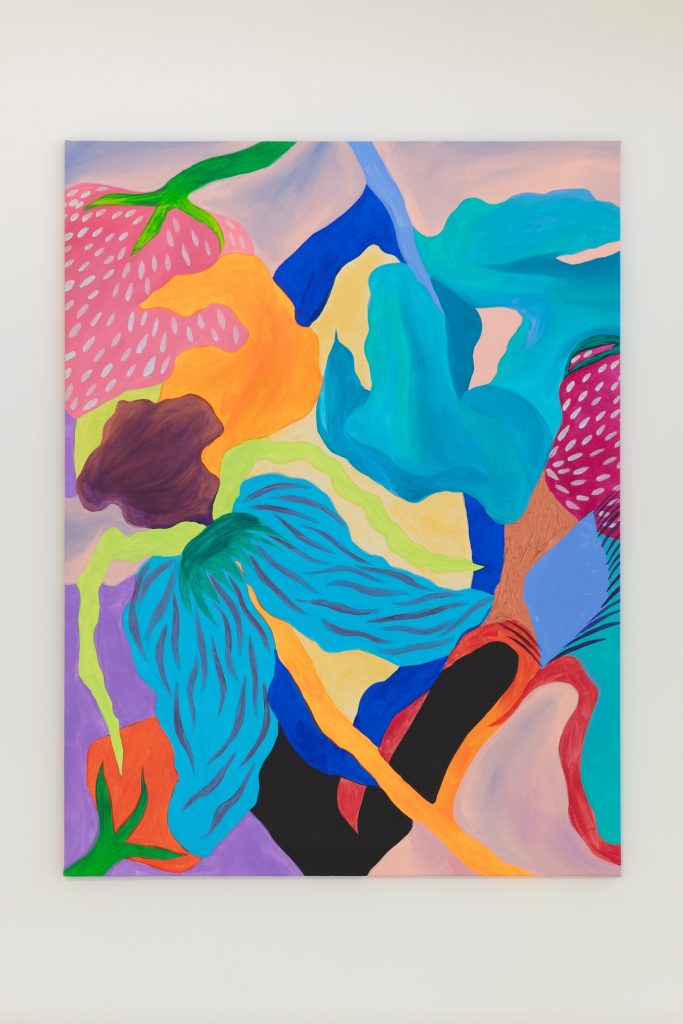
By presenting the human body in a politically fragile context, Joelington Rios (Maranhão), a native of a quilombola community in the Northeast of the country, uses photography to envision new frameworks for the black body. This involves portraying him beyond a punitive condition, showing his glory and strength. In the “What Sustains Rio” series, individuals from marginalized communities are portrayed as the foundation of the entire state, simultaneously representing the central image of a postcard that transcends time and space.
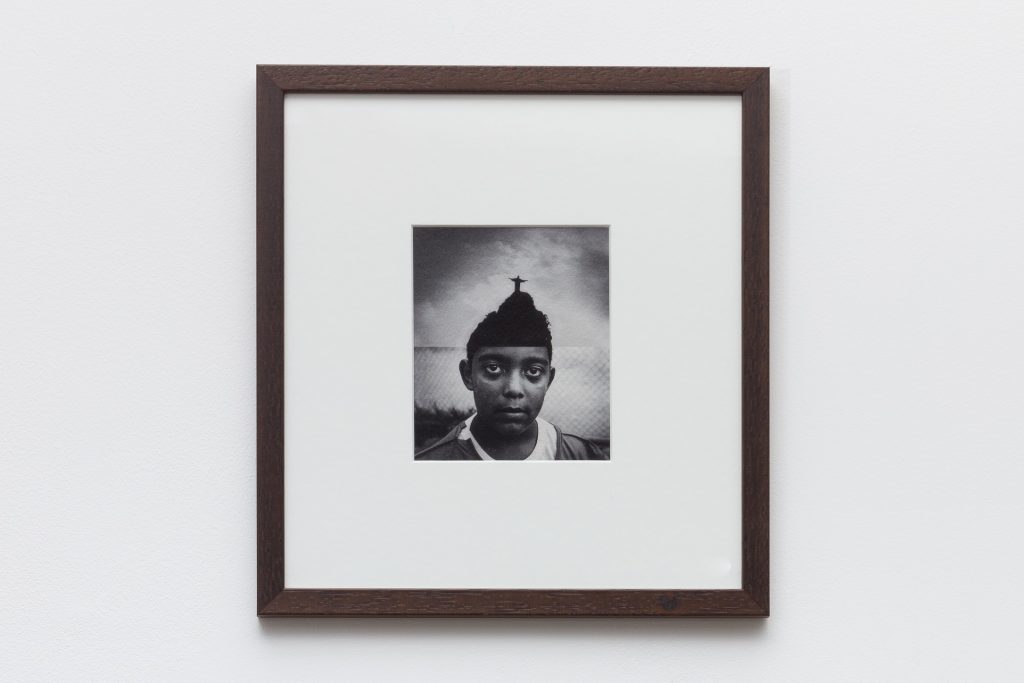
About LAMB Gallery
Founded in 2015, LAMB aims to promote emerging artists in Europe and Latin America. Since the opening of its first permanent space, in Mayfair (London), the gallery has been carrying out cultural programming in defense of young talents through a constant exchange between artistic and curatorial practices, markets and institutional projects developed in the London-São Paulo axis. In 2019, LAMB opened a headquarters in São Paulo seeking to strengthen this cultural exchange between Latin America and Europe.
Whispers from the South
Curator: Lucas Albuquerque
Artists: Ayla Tavares, Hal Wildson, Heloisa Hariadne, Joelington Rivers, Luísa Brandelli, Noara Quintana, Pedro Neves and Talles Lopes
Visitation: Tuesday to Saturday, from 12pm to 7pm, until November 5th
LAMB Gallery – 10 White Horse St, London W1J 7LJ, United Kingdom


